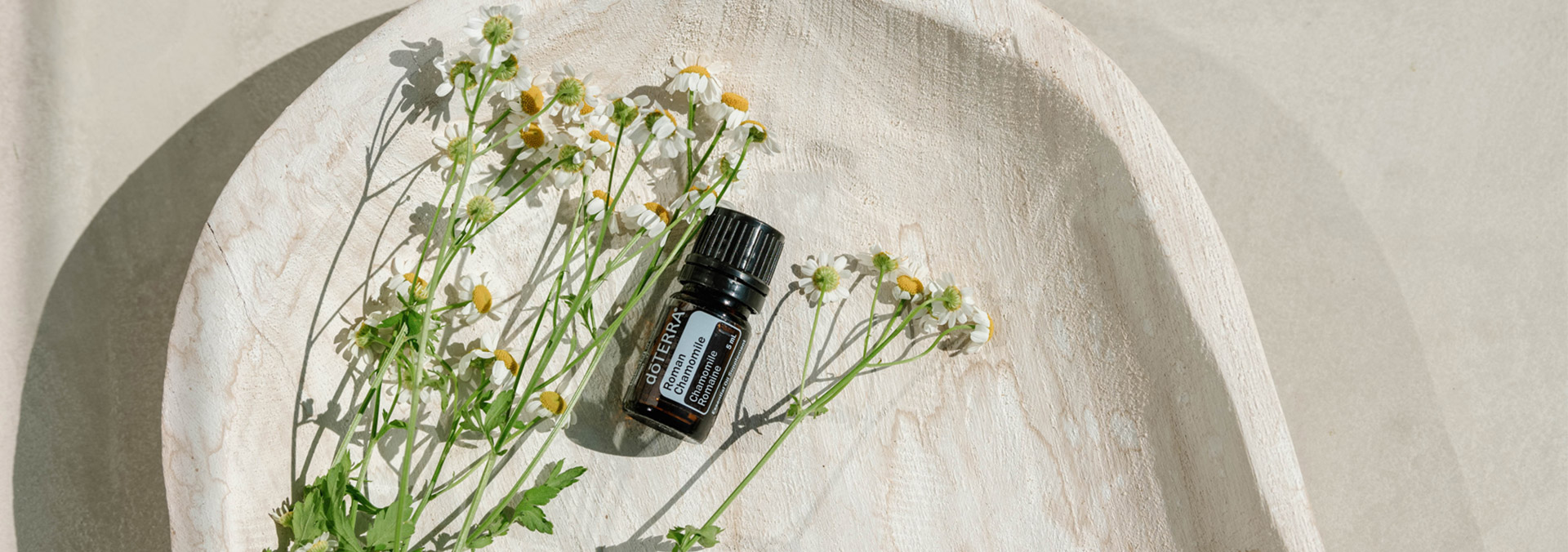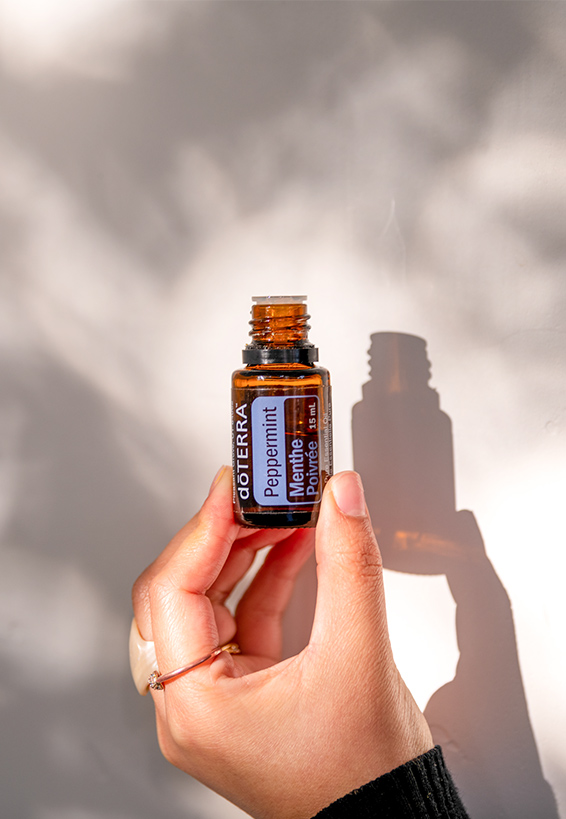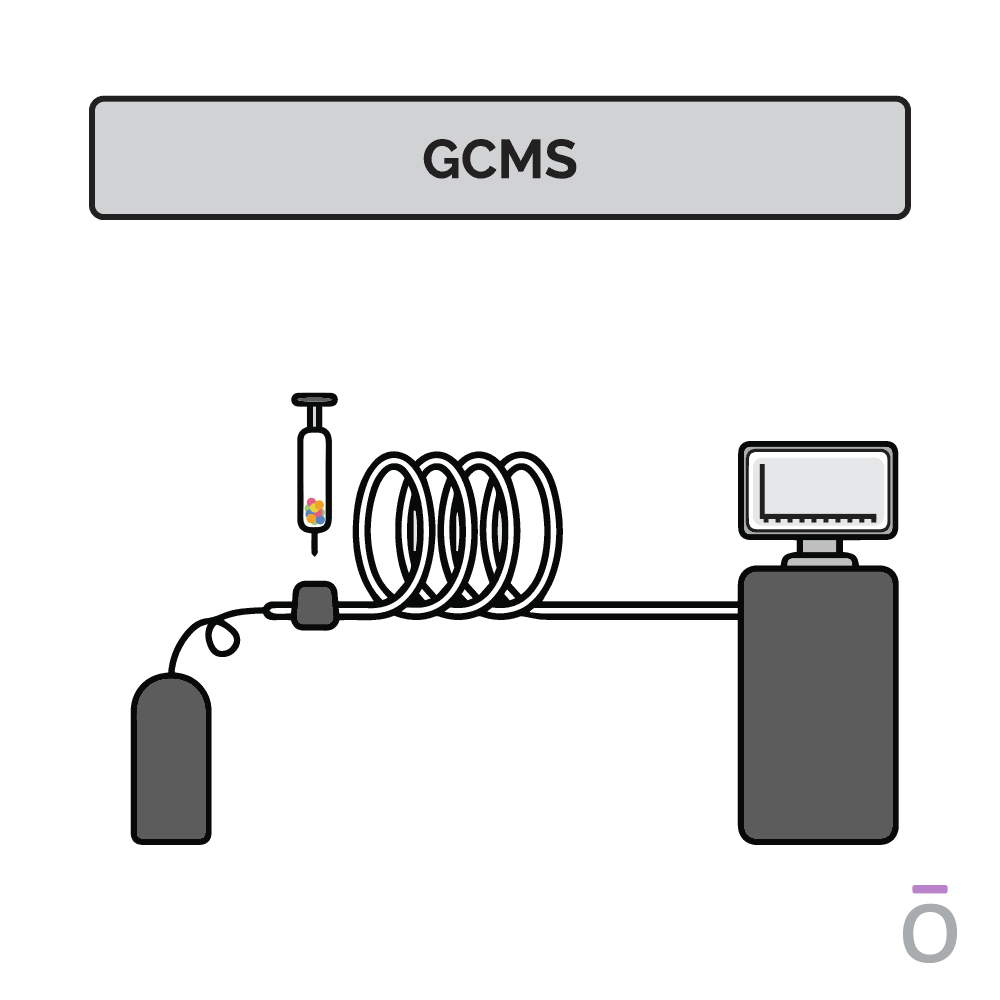Origin: a Latin derivative
meaning "Gift of the Earth."
Essential Oil Purity: CPTG® Quality Testing

Are doTERRA Oils Pure?
The purity of an essential oil is its most important characteristic. Proper methods of growing, harvesting, and distilling are crucial to maintaining this high level of quality, ensuring the only thing in your essential oil bottle is untainted essential oil. Above all else, purity is the top priority of doTERRA when producing essential oils.
Poor production practices and the development of synthetic essential oil variations make it impossible to accurately identify a pure essential oil without scientific analysis. When an essential oil is contaminated or adulterated with synthetic fillers, it becomes less effective and can even pose health risks. To prevent this, doTERRA works with growers and distillers throughout the entire process, and puts every essential oil through rigorous scientific testing to ensure essential oil quality and purity.
How Does doTERRA Make Sure Their Essential Oils Are Pure?
From the beginning, the doTERRA mission has been to share pure, high-quality essential oils with the world. Without an acceptable industry-wide standard for essential oil quality, doTERRA created its own standard to certify that there are no added fillers, synthetic ingredients, or harmful contaminants in doTERRA essential oils that would reduce their efficacy. This is the “CPTG Certified Pure Tested Grade®”, or “CPTG®” standard.
Not all essential oil companies choose to enforce high testing standards for their oils like doTERRA does. In fact, many companies skip important steps in the testing process to save money or time. Unfortunately, when proper testing measures are not taken, it’s impossible to ensure that an essential oil is purely essential oil. For doTERRA, no amount of saved money or time is worth producing or selling poor quality essential oil. The CPTG process includes a rigorous examination of every batch of oil, along with third party testing, to guarantee transparency. This ensures that the product you receive is of the highest quality and purity.
Not only does doTERRA hold itself accountable to every step of quality testing you, the customer, expects, but doTERRA also goes a step further. Every product and package goes through a battery of tests to ensure a long, effective shelf-life before it is made available for sale.
Why Is It Important to Use Pure Essential Oils?
Some people ask, “Does essential oil purity really matter?” Or, “What happens if I use essential oils that aren’t pure?”
The answer is yes—essential oil purity matters. Using an essential oil that contains impurities or synthetic fillers can make it difficult to feel the intended benefits of the essential oil, and it can potentially put you at risk. However, when you use pure, unadulterated essential oils, they are very effective to use. Caring about you is why doTERRA cares so deeply about essential oil purity.
How to Know If Your Essential Oils Are Pure
How can you tell if your essential oils are pure? Before buying essential oils, do a little research to find out how essential oil companies source, produce, and test their oils.

Here are a few questions to ask during your research:
- Plant quality: Does the company use high-quality plants to produce their essential oils? Are chemicals and pesticides used in the care of source plants?
- Production practice: Does the company have safety procedures in place to guard against contamination during the production process? Are essential oils adulterated or are synthetic fillers added to cut costs?
- Testing methods: Does the company test each batch of essential oil? Is impartial, third-party testing used? Are test results available to the public?
- Storage and handling: Are the essential oils carefully processed, packaged, and stored to avoid chemical alterations caused by exposure to heat or light? (Amber bottles are typically the best option for essential oil storage for this reason.)
Ensuring Essential Oil Purity: The CPTG Process
The CPTG testing process happens at three stages. First, doTERRA carefully reviews the chemical composition of each essential oil shortly after distillation. Then, the doTERRA production facility carries out a second round of testing to ensure that the essential oils distilled and tested during the first round are the same ones that arrived at our facility. Finally, a third review of the essential oil chemistry is conducted as the essential oils are packaged into bottles before they are shipped out to consumers.
Each of these three layers of CPTG testing confirms that doTERRA essential oils are free of contaminants and no unexpected alterations occurred during any stage of production.
8 Ways to Know doTERRA Essential Oils Are Pure
The CPTG quality testing process includes four main stages, consisting of 8 different methods of testing, to guarantee that every batch of doTERRA essential oil is free of impurities and unadulterated. The four stages of testing include essential oil chemistry, physical, contamination, and on-going stability.
Throughout these four stages, here are the eight tests doTERRA uses to ensure essential oil purity:
- Gas chromatography
- Mass spectrometry
- Chirality testing
- Isotopic analysis
- Organoleptic testing
- Fourier-transform infrared spectroscopy (FTIR)
- Heavy metal testing
- Microbial testing
Step 1 - Chemistry
Chemistry is the foundation of pure, quality essential oils. After the aromatic compounds are distilled from the plant material, a combination of tests confirm that each batch meets chemical composition standards to guarantee that the chemistry of the essential oil matches its expected profile.
Using gas chromatography testing to detect essential oil purity
In gas chromatography, an essential oil is vaporized and passed through a long column to separate the oil into its individual components. Each component travels through the column at a different speed, depending on its molecular weight and chemical properties, which are measured as they exit the column. Using this testing method, quality control analysts can determine which compounds are present in a test sample.

Using mass spectrometry testing to detect essential oil purity
Mass spectrometry is used together with gas chromatography to further determine the composition of an essential oil. In mass spectrometry, the constituents previously separated by gas chromatography are ionized and sent through a series of magnetic fields. Using molecular weight and charge, the amount of each constituent can be identified, providing additional insights into the potency of an essential oil.
Using isotopic analysis testing to detect essential oil purity
Matter is made up of tiny chemical building blocks called elements. Although dozens of elements exist, each one is distinct due to the protons it contains. Sometimes, an element can exist in more than one stable form if it has more or less neutrons. When this occurs, the elements are called isotopes. The element carbon exists in two stable isotopes, carbon-12 (6 protons and 6 neutrons) and carbon-13 (6 protons and 7 neutrons).
Because essential oils are organic compounds, they are composed primarily of carbon atoms and will have a certain ratio of carbon-12 to carbon-13 isotopes. This ratio varies based on location around the world.
Using a special type of Mass Spectroscopy, it is possible to determine which isotopes are present in an essential oil constituent and at what amounts. If sourced from the same location, every constituent in an essential oil should have the same ratio of isotopes. If a particular constituent has an isotopic profile different than that of the other constituents, then the quality control analyst will know that a particular essential oil contains an adulteration.

Using chirality testing to detect essential oil purity
Chirality, a term derived from the Greek word hand, describes the 3D orientation of a molecule. Just as you have two hands, chiral molecules exist in two forms, distinguished as either the right or the left hand. You may visualize this principle by looking at your hands: when placed side by side, they’re mirror images of each other. However, when placed on top of each other, no matter how you turn them, you cannot get them to line up exactly.
In molecules, each “hand” has different chemical properties, which affects their physiologic interactions in the body. One hand is produced predominantly in nature. However, in a laboratory environment, the ratio of right- to left-handed molecules is always 50/50 because of their structural similarities. The ratio of right- to left-handed constituents can be determined through a special type of gas chromatography.
Though not commonly performed on a batch-to-batch basis, this testing method is used to ensure that no synthetic elements are present in any essential oils.

Step 2 - Physical Testing
Following chemical testing, each batch of essential oils goes through a battery of physical tests: organoleptic assessments, Fourier Transform Infra-Red Spectroscopy (FTIR), optical rotation, specific gravity, and refractive index.
Using organoleptic testing to detect essential oil purity
Organoleptic testing involves the use of our human senses, specifically sight, smell, taste, and touch. To expert distillers, the senses are used as the first line of quality testing to provide immediate clues as to the acceptability of a product. An oil that has an unusual smell, uneven consistency, or strange color instantly tells the distiller that something is wrong. Often times, this testing is used as a preliminary quality control step before any other tests are conducted.
Using Fourier-transform infrared spectroscopy (FTIR) to detect essential oil purity
Fourier-transform infrared spectroscopy (FTIR) is conducted to ensure the potency and consistent quality of a batch of essential oil. This testing method identifies the structural components of essential oil compounds. In an FTIR scan, infrared light of different frequencies is shined through a sample of essential oil and the amount of light absorbed by the sample is measured. The quality of the sample is determined by comparing the results from the current FTIR reading to a historical database containing a record of absorption patterns of high-quality samples.

Additional Physical Testing to detect essential oil purity
Optical rotation then tests for additional chirality, using instrumentation to twist essential oil molecules in order to identify synthetic additives that GC/MS testing would not detect. Next, the specific gravity of each batch is tested; the volume-to-weight ratio is compared to reference standards to verify oil quality and purity. Lastly, a refractometer is used to determine if the essential oils refractive index–a measurement of how light propagates through a specific substance–meets doTERRA established standards.
Step 3 - Contamination Testing
Batches that make it through physical testing are then run through a series of contamination tests to confirm that there are no harmful contaminants present. doTERRA tests for potentially harmful microorganisms, heavy metals, and pesticides.
Using heavy metal testing to detect essential oil purity
Heavy metal testing shows the amount of heavy metal content in any given essential oil. When properly distilled, essential oils shouldn’t contain heavy metals. ICP-MS testing uses a high-energy medium called inductively coupled plasma (ICP) to ionize the sample. The sample is then run through a mass spectroscope, which separates the sample into its elemental parts and provides a reading about which elements are present and at what quantities.
Using microbial testing to detect essential oil purity
Microbial testing involves analyzing a batch of essential oils for the presence of biohazardous microorganisms, such as fungi, bacteria, viruses, and mold. The process involves drawing a sample and then adding that sample to a sterile growth medium in an enclosed dish or plate. The sample is incubated for a period of time and then observed for microbial growth. This test is performed on product entering the manufacturing facility and on finished products prior to distribution to ensure that no products have been contaminated during the filling process.
Step 4 - On-Going Stability Testing
The final phase of testing verifies that CPTG essential oils will maintain their purity and efficacy over time. Stability testing is ongoing and involves not only examining the integrity of essential oils, but of their packaging as well. In the first series of tests, utilizing chambers that can alter temperature and humidity, we analyze what happens to the essential oils when exposed to different atmospheric conditions in both accelerated and long-term studies for extended periods of time. This testing protocol ensures that the quality of doTERRA CPTG essential oils will continue years after they have been manufactured.



